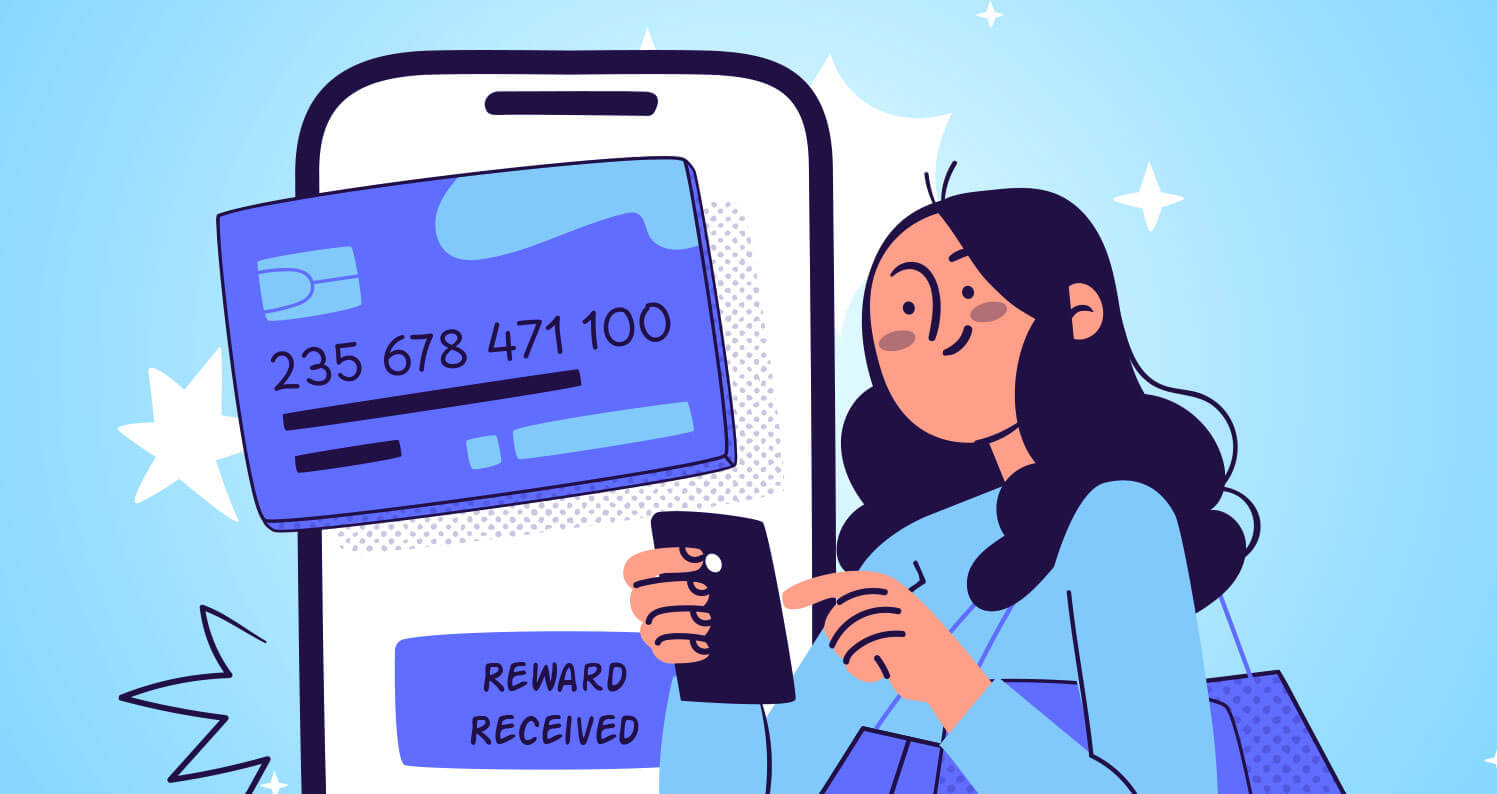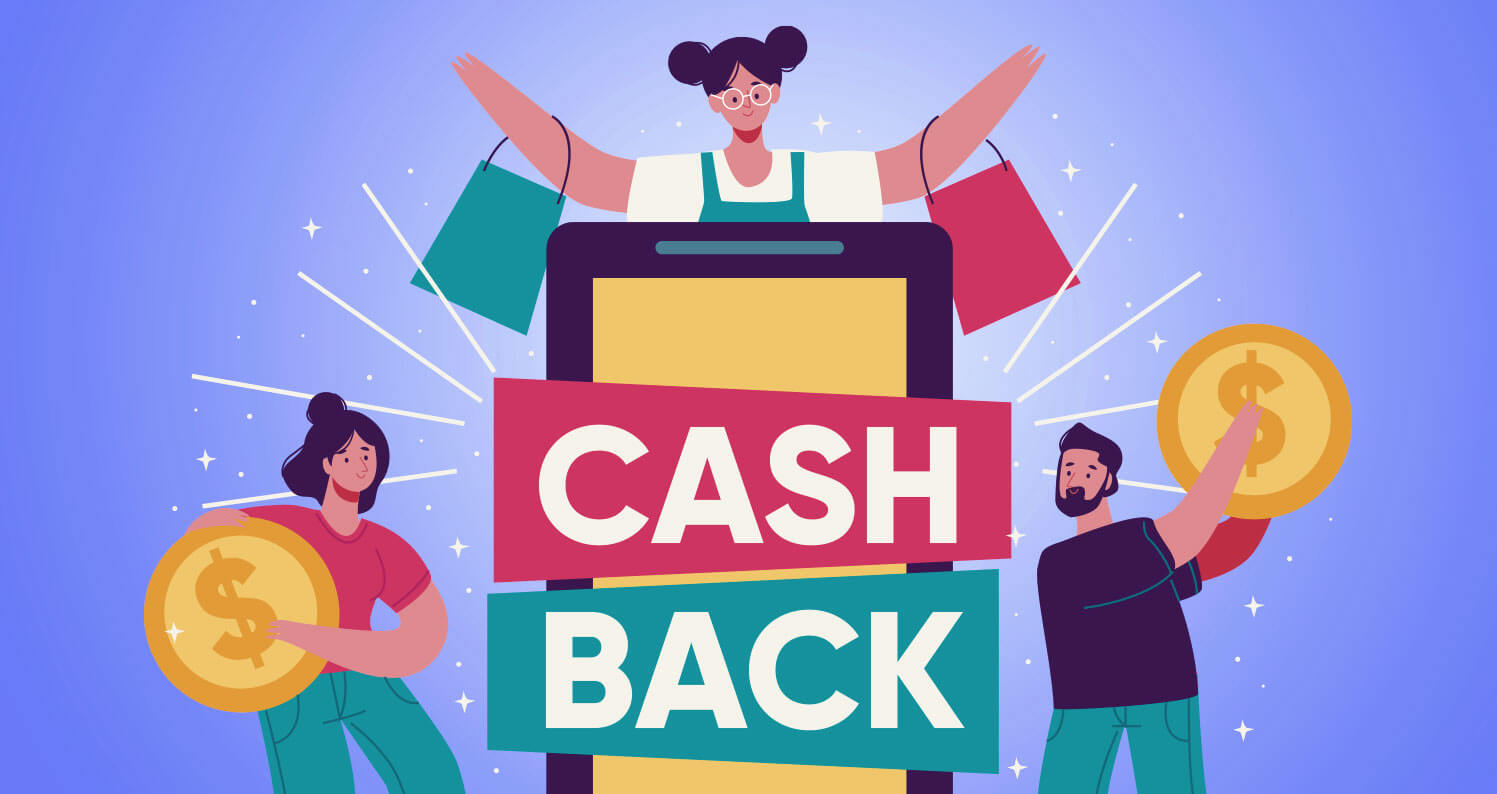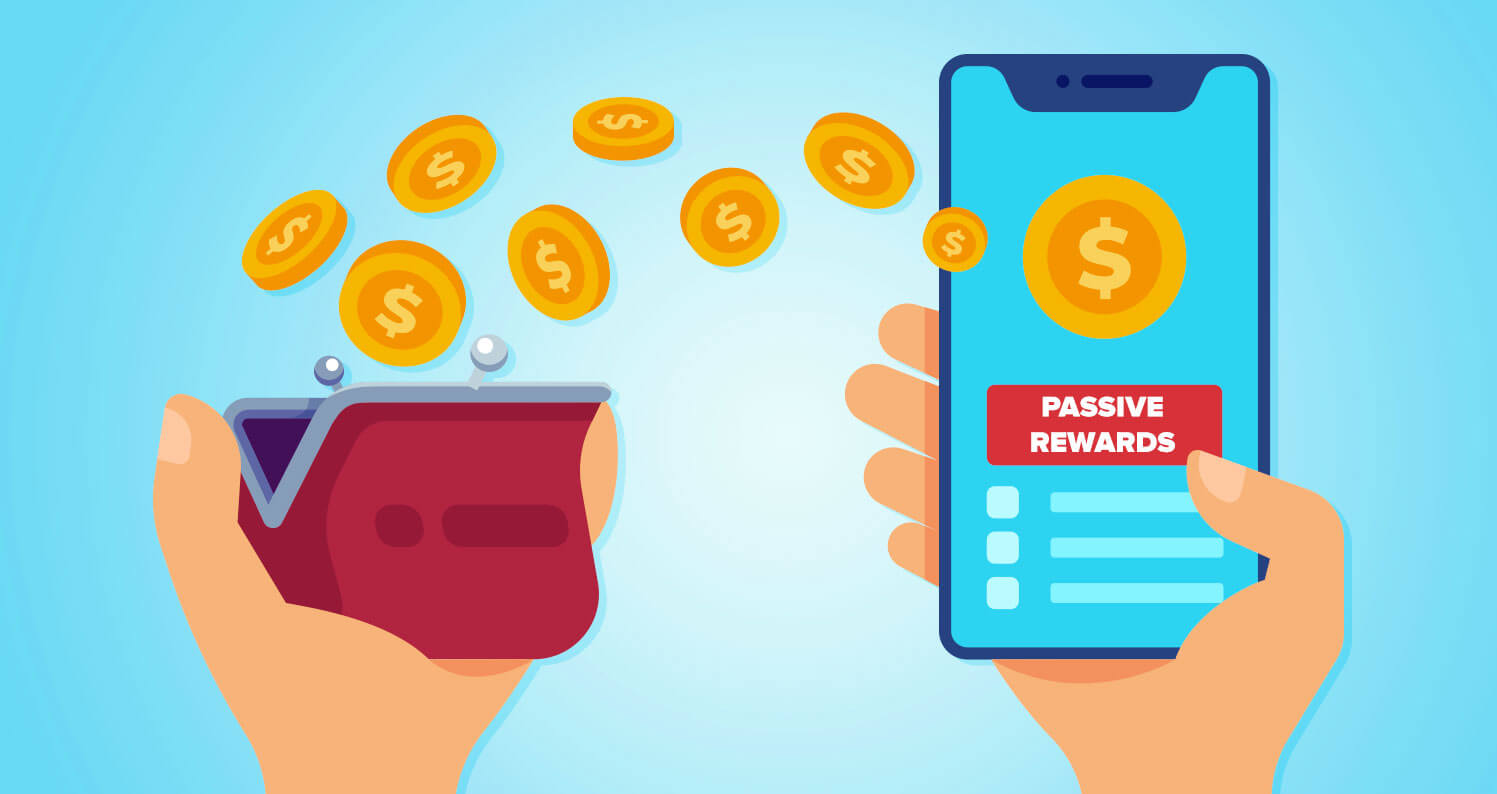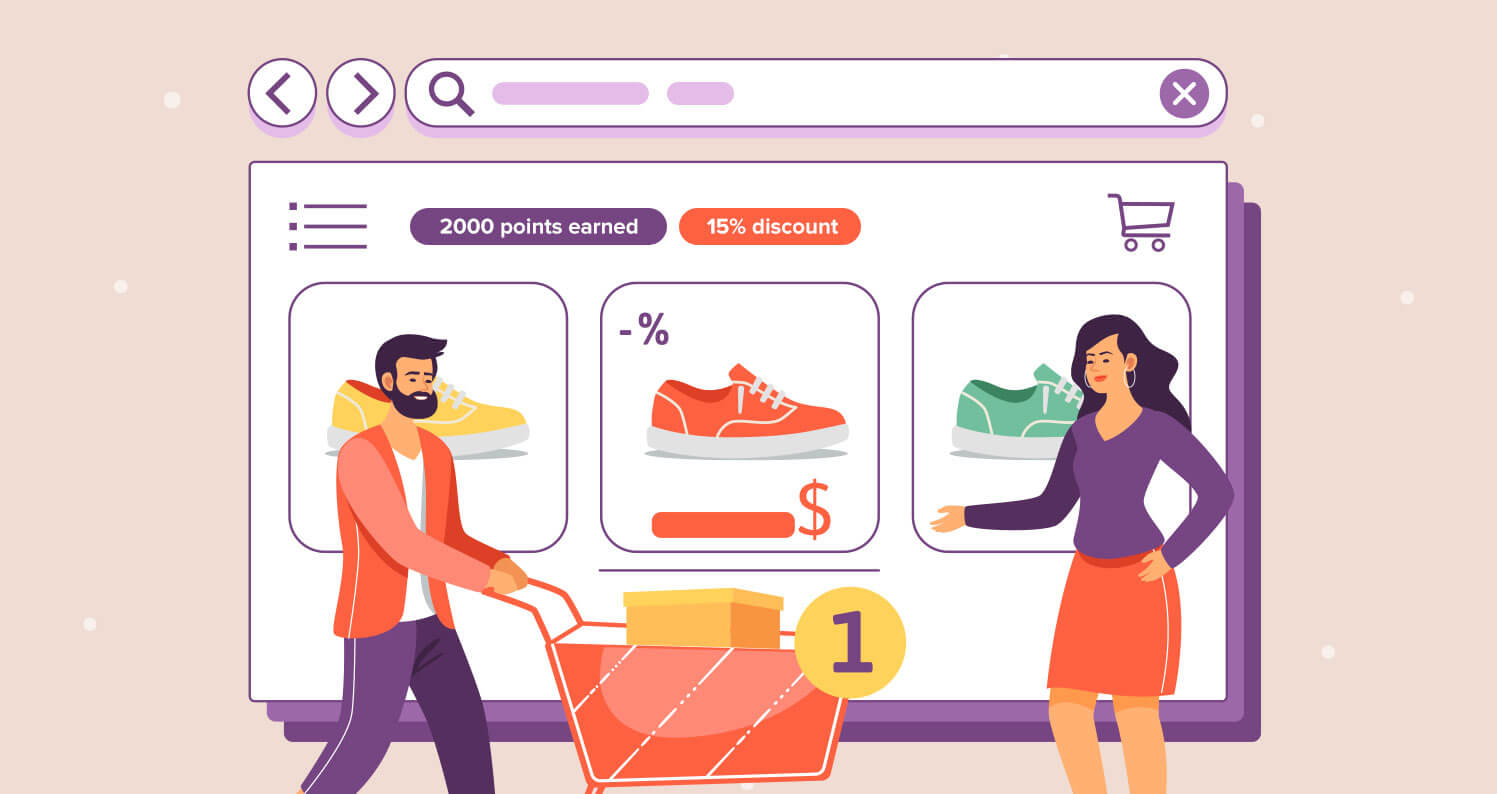Active vs Passive Rewards Programs: What Brands Need to Know
Learn about “click-to-activate” and “always-on” rewards programs. Find out what they do to amplify and accelerate affiliate program success.

When I think about rewards programs, I’m brought back to shopping with my mother in the ‘90s. She had a wallet full of membership cards.
Loyalty cards, credit cards, points cards, punch cards, you name it. Her purse was a treasure trove of magic plastic that could unlock an array of discounts and freebies.
Every time we stopped at the register, I’d groan. I knew we’d be holding up the line as my mother dug through her bag, asking if we would get any membership discounts.
Now, looking back, maybe she was on to something.
Rewards programs are a powerful promotional strategy that benefits both brands and consumers. They can also supplement affiliate success. In this article, I compare active and passive rewards programs, also covering the ways they can integrate with a brand’s affiliate strategy.
What are affiliate rewards programs?
Affiliate rewards programs combine affiliate marketing with rewards or loyalty incentives. These programs provide structured benefits to consumers who take actions such as making a purchase, signing up, or engaging with content.
In return, consumers earn points, cashback, perks, or other incentives.
- For brands, this creates another way to drive conversions and build loyalty.
- For affiliates, it means added value that can increase conversion rates and repeat traffic.
How do affiliate rewards programs work?
Affiliate rewards programs typically involve third-party platforms, partners, or publishers who incentivize users to take specific actions.
When a user clicks through an affiliate link or registers a payment method, they are either automatically enrolled in a loyalty offer (passive) or prompted to activate a reward manually (active). These actions are then tracked and verified before commissions are paid to the partner.
Some programs are run through cashback sites, apps, browser extensions, or credit card-linked offers. The tracking and attribution often run through affiliate networks or SaaS platforms.

People engage with cashback offers by activating rewards before making a purchase.
What are active rewards programs?
Active rewards programs require a user to manually activate a promotion before earning a reward. This might involve clicking a button to “activate cashback” or enrolling in a specific offer before purchasing.
The key element here is the user’s intent and interaction.
These programs give brands a clearer attribution window, often tying engagement directly to a promotional moment. They can also be structured around limited offers or exclusive promotions to drive urgency.
Why would I run an active rewards program?
Active programs allow for more controlled attribution. They ensure that users are consciously opting into a reward, which can help validate partner value and reduce concerns about passive attribution.
They also allow for greater flexibility in offer testing, like A/B testing different messages or incentives. This format is often favored by brands that want cleaner data around intent and performance.
What are passive rewards programs?
Passive rewards programs have customers earning rewards automatically. This requires little to no effort on their part, aside from making purchases or engaging with the brand.
In other words, shoppers enjoy perks simply by doing what they’d do anyway.
Of course, even with passive rewards, some customers may be more actively engaged than others.
I grew up in a family where saving through loyalty programs was the norm. It was strategic, calculated, and often the reason we had food on the table or something extra during the holidays.
While it was anything but passive for my family, these loyalty programs are still considered “passive.”
Why would I run a passive rewards program?
Passive programs lower friction for the user. There are no buttons to click or steps to complete. This can dramatically improve adoption and conversion rates.
These programs can also capture users who are deal-conscious but not necessarily promo-savvy. The simplicity of earning points or cashback without taking extra steps leads to a smoother user journey and better user retention.
For brands with a broad customer base, this model can surface in-channel value without complicating the experience.
How do active and passive rewards benefit my affiliate program?
Both formats drive performance but in different ways.
Active rewards can be great for driving bursts of high-intent traffic.
Passive rewards, on the other hand, support long-tail value and allow partners to stay embedded in the user’s day-to-day shopping habits.
Active partners might be better for driving promotional spikes, while passive ones keep the program humming in the background.
A healthy program often includes both.

Customers can earn passive rewards automatically as they shop.
What are alternatives to passive loyalty programs?
In contrast, some programs require an opt-in. This can be true of clubs, banks, and membership platforms, where users are not automatically eligible for discounts but must activate the promotion.
These are known as “click-to-activate” or CTA campaigns.
Brands may also experiment with hybrid models, where the user joins a loyalty program once, then toggles on or off specific offers. Others might structure rewards around tiered achievements or mission-based goals, gamifying the experience to build long-term engagement.
What are common concerns about CTA campaigns?
Brands sometimes feel that opting in, showing interest, and intent in purchasing a product with CTA is the only way to attribute sales to partners fairly. They view the passive system that gifts a user, sometimes unknowingly, with points or cashback when a credit card is registered as less valuable.
In other words, they see it as giving too much or double dipping.
Technology can’t yet measure real-time user intent, but data supports the performance of these incentive-based campaigns. Participation often correlates with higher engagement, and CTA structures can actually lead to stronger retention when paired with the right messaging.
Why are CTA campaigns a missed opportunity for brands?
In 2023, it was reported that US consumers held an average of 17.9 loyalty program memberships. It was a record high, with only about half of these memberships being actively used.
This suggests that a significant portion of consumers are enrolled in multiple programs, though not all are actively engaged. Many users may join but only respond to loyalty perks when reminded or nudged by a brand.
What this could indicate is that many users in the US are keen to join but only use the loyalty discounts if they are engaged by a brand or have high intent (much like my mother!).
How can brands maximize performance of CTA programs?
Many users who appear passive may actually be high-intent shoppers. They might skip the activation step not because they lack interest, but because the prompt wasn’t visible, the timing was off, or they simply forgot.
Ignoring these users may mean missing out on a large, motivated audience. A well-structured CTA program can reengage them and drive meaningful results.
To maximize performance, brands need to reduce friction and increase visibility around activation moments. CTAs should be timely, easy to access, and clearly tied to value. This can include browser extensions that surface offers when a user visits your site, reminder nudges via email, or overlays during checkout that highlight available rewards.
Segmentation is also key.
Brands should build dynamic activation paths based on behavior. For example, it may be better to treat a repeat buyer differently than a first-time visitor. Some users may respond strongly to urgency-based messaging, while others respond best to loyalty incentives or bonus points.
When activation is intuitive and rewarding, users are more likely to engage. That’s when CTA campaigns shift from being a checkbox to a true performance lever.

Affiliate-driven loyalty programs reward shoppers with points and discounts at checkout.
Loyalty programs and the macroeconomic climate.
Another factor is the macroeconomic climate. With current economic uncertainty, studies are showing people being more frugal. This has them gravitating towards more competitive deals and subscribing to more loyalty programs.
Now that I’m in the affiliate marketing industry, I can see both sides of the coin and know for a fact that the affiliate channel thrives in a weak economy.
I understand how a brand might feel that loyalty programs are just giving away freebies to affiliate partners (who are promoting you) and to users (stacking up those points and gifts).
I have a hard time believing the average shopper is gaming the system just to rack up cashback.
In reality, most consumers are looking for value—not loopholes. Data from industry reports shows that loyalty program engagement rises when economic pressure increases.
This isn’t because people are trying to cheat brands, but because they’re being more intentional with their spending. Cashback and perks are ways to stretch a budget, not exploit it.
How should brands think about loyalty programs?
Instead of viewing loyalty programs as a giveaway, brands might consider them as a visibility engine.
Being listed in a loyalty platform or cashback app can help you reach new shoppers who are comparing options and may not have discovered your brand otherwise.
If they’re choosing between similar products, a reward could tip the scale. If the experience is strong, that single purchase can turn into repeat behavior.
That’s exactly how I became loyal to a mascara I got as a gift through Sephora’s rewards program. I wouldn’t have picked it out myself, but after trying it, I started buying it regularly. Loyalty programs didn’t just give me something for free—they gave the brand a way in.
An agency can determine whether loyalty incentives are right for you.
As an account manager, it’s essential to analyze every angle and present a comprehensive view to the client. Whatever that may be, my mother might have been joined to passive loyalty programs. However, she was never a passive shopper, and I know she is not alone.
As the largest independent affiliate agency, we’re experts in applying loyalty incentives to your campaign. We can review what you’ve tried, what you’re trying, and what you haven’t yet considered to make the most of your affiliate program.
Have us maximize your rewards program strategy. Contact us today to see exactly how we’ll help.
More Blogs
Psychological Safety: How it Drives Better Marketing Solutions
Fostering an environment where team members feel psychologically and emotionally safe leads to better marketing outcomes.As agency work environments grow more flexible, workplace culture must evolve as well. For agencies, like Gen3 Marketing, who strive to deliver...
How AI & Voice Commerce Are Changing Affiliate Marketing
Artificial Intelligence (AI) and voice commerce are changing the affiliate marketing channel. Learn how you can capitalize on the new opportunities offered by these technologies.Artificial intelligence and voice commerce are transforming how consumers discover and...
How Long Does SEO Take?
Understanding the timeline for SEO success is essential. We dive into a typical SEO timeline, detailing key factors that affect outcomes.Every business considering SEO services for their brand and website asks the same (very reasonable) questions: How long does SEO...

 By
By 

